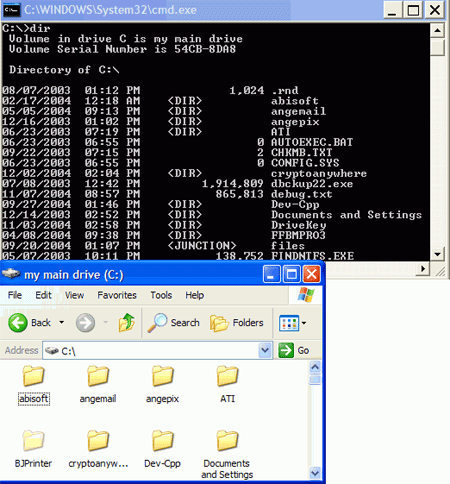Junction.exe Windows 7
I had on my to do list to write a detailed post on how to remove the Windows.Old folder after upgrading. While reading through some I noticed he already had a great post on it. Thanks Rick, you saved me a bit of work. You can find the Step-By-Step on his blog.


These instructions use the Download to do the heavy lifting. The identical instructions should work for prior versions of Windows Client or Window Server as well (back to 2000). In a future post, I may opt to build on it with PowerShell and just give you one quick script to do it all. Task complete!!! See for tips on using junctions.
Post navigation • •.
In Windows Vista and Windows Server 2008, the default locations for user data and system data have changed. For example, user data that was previously stored in the%SystemDrive% Documents and Settings directory is now stored in the%SystemDrive% Users directory. For backward compatibility, the old locations have junction points that point to the new locations. For example, C: Documents and Settings is now a junction point that points to C: Users. Backup applications must be capable of backing up and restoring junction points. These junction points can be identified as follows: • They have the FILE_ATTRIBUTE_REPARSE_POINT, FILE_ATTRIBUTE_HIDDEN, and FILE_ATTRIBUTE_SYSTEM file attributes set.
• They also have their access control lists (ACLs) set to deny read access to everyone. Applications that call out a specific path can traverse these junction points if they have the required permissions. However, attempts to enumerate the contents of the junction points will result in failures. It is important that backup applications do not traverse these junction points, or attempt to backup data under them, for two reasons: • Doing so can cause the backup application to back up the same data more than once. • It can also lead to cycles (circular references). Per-User Junctions and System Junctions The junction points that are used to provide file and registry virtualization in Windows Vista and Windows Server 2008 can be divided into two classes: per-user junctions and system junctions.
SysInternals has a program junction. Asus Atheros Ar5bxb63 Windows Xp Driver Wireless there. exe that creates Junctions (aka. Reparse points, aka. Symlinks) in Windows. However, Windows also comes with a mklink which seems. JUNCTION.EXE is a type of EXE file associated with Inside Microsoft Windows 2000 Third Edition developed by Microsoft for the Windows Operating System. The latest known version of JUNCTION.EXE is 1.0.0.0, which was produced for Windows.
Per-user junctions are created inside each individual user's profile to provide backward compatibility for user applications. The junction point at C: Users username My Documents that points to C: Users username Documents is an example of a per-user junction. Per-user junctions are created by the Profile service when the user's profile is created. The other junctions are system junctions that do not reside under the Users username directory. Examples of system junctions include: • Documents and Settings • Junctions within the All Users, Public, and Default User profiles System junctions are created by userenv.dll when it is invoked by Windows Welcome (also called the machine out-of-box-experience, or mOOBE).
Comments are closed.